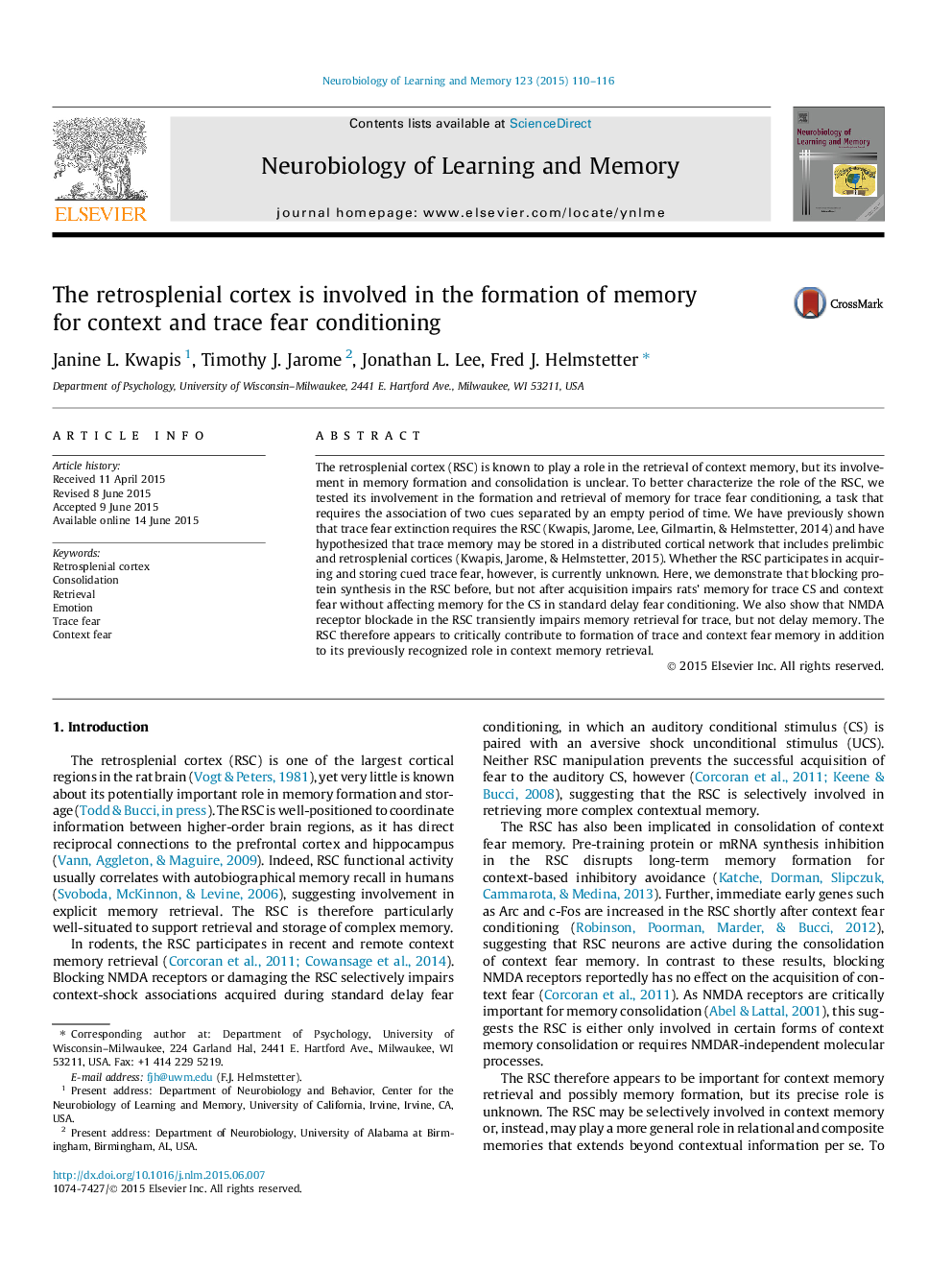| Article ID | Journal | Published Year | Pages | File Type |
|---|---|---|---|---|
| 936453 | Neurobiology of Learning and Memory | 2015 | 7 Pages |
•Pre-training infusion of anisomycin into the RSC impairs trace and context fear conditioning.•Blocking NMDA receptors in the RSC also impairs retrieval of trace CS fear.•Delay CS fear is not affected by these RSC manipulations.•This suggests that the RSC is involved selectivity in trace and context fear memory formation.
The retrosplenial cortex (RSC) is known to play a role in the retrieval of context memory, but its involvement in memory formation and consolidation is unclear. To better characterize the role of the RSC, we tested its involvement in the formation and retrieval of memory for trace fear conditioning, a task that requires the association of two cues separated by an empty period of time. We have previously shown that trace fear extinction requires the RSC (Kwapis, Jarome, Lee, Gilmartin, & Helmstetter, 2014) and have hypothesized that trace memory may be stored in a distributed cortical network that includes prelimbic and retrosplenial cortices (Kwapis, Jarome, & Helmstetter, 2015). Whether the RSC participates in acquiring and storing cued trace fear, however, is currently unknown. Here, we demonstrate that blocking protein synthesis in the RSC before, but not after acquisition impairs rats’ memory for trace CS and context fear without affecting memory for the CS in standard delay fear conditioning. We also show that NMDA receptor blockade in the RSC transiently impairs memory retrieval for trace, but not delay memory. The RSC therefore appears to critically contribute to formation of trace and context fear memory in addition to its previously recognized role in context memory retrieval.
